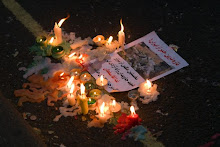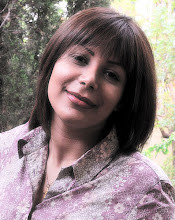Detail showing the Albanian Mountains
Detail: Flora Sandes
Detail: Mabel St. Clair Stobart
Detail: Dr. Elsie Maud Inglis
 |
The WW1 pot remembers a tiny splinter of that vast sprawling
war. 1915 was the year of the Armenian genocide, (http://www.genocide-museum.am/eng/armenian_genocide.php),
still denied by the Turkish government and still an open wound for many
Armenians. The scars on the land where once the Armenian villages stood and people
lived, can easily be seen in Eastern Turkey, particularly around Mr. Ararat,
shown on the pot surrounded by fields of wild-flowers - stripes of yellow, pink and purple. The image was taken
from a photograph I took of Mt. Ararat as I explored the ruins
of one such village.
Dr. Elsie Maud Inglis, (1864-1917), shown on the pot at the
base, in front of the largest tent, founded the Scottish Women’s Hospitals,
(SWH), at the start of WW1, http://scottishwomenshospitals.co.uk/ They were staffed by women and operated independently of the War Office. Inglis had offered
her services as an experienced doctor in support of the war effort but was
brushed off with: ‘My good lady, go home and sit still.’ The SWH set up field
hospitals throughout the conflict zones in Europe and Russia and, in 1915, the
hospital units were in Serbia to support both soldiers wounded in action on the
Balkan front, and the civilian population, which was suffering an epidemic of
typhoid.
Above the field hospital is a bullock train bringing
supplies to set up one of the field hospitals in Serbia. Mabel St. Clair
Stobart, (http://www.dorsetcountymuseum.org/dorset-woman-at-war),
(1864-1952), pictured further round the pot, at the base, with two horses, founded the Women’s Sick and Wounded Convoy Corps,
(1912), and the National Women’s Service League, (1914). She commanded the
Serbian Relief Fund's Front Line Field Hospital in Serbia and, during the
bitter winter of 1915/16, joined the Great Serbian Retreat, leading her staff
through the Albanian mountains to the Adriatic coast, without any loss of life.
At the top of the pot, just beneath the rim, is Mr. Ararat. Moving
down and around, a part of the Great Retreat becomes visible, as it moves
towards the high mountain passes towards Albania. When Serbia was invaded by German,
Austro-Hungarian and Bulgarian forces in late 1915, retreat was ordered by the
Serbian general as the only viable way to survive. It was an exodus of some 355,000
people: men, women, and children, with donkeys, cattle, carts, and whatever they could
carry. Approximately 200,000 people died in the mountains, with 155,000 reaching the
Albanian coast, and eventually crossing the Adriatic to Corfu and Salonika. http://www.iwm.org.uk/collections/search?query=Serbian%20retreat
Joining the retreat was Flora Sandes, http://www.bbc.co.uk/programmes/p01s0yg1
(1876-1956), who was working with the St. John’s Ambulance unit at the time.
She had always wanted to be a soldier and resented the limitations of life as a
girl and as a woman. She had to join the retreat when enemy forces invaded and,
initially, joined the Serbian Red Cross but then enrolled in the Serbian army
and fought on the allied side, with the Serbs. She was awarded the Order of the
Karadorde’s Star, Serbia’s highest military honour, for bravery in active service,
‘under fire,’ and was promoted to Sergeant major. She lived most of the rest of
her life in Serbia, returning to England only after the death of her husband in
1941. She is pictured at the base of the pot, lit up by fire, during the battle
of Monastir, where she was wounded in 1916.


















































